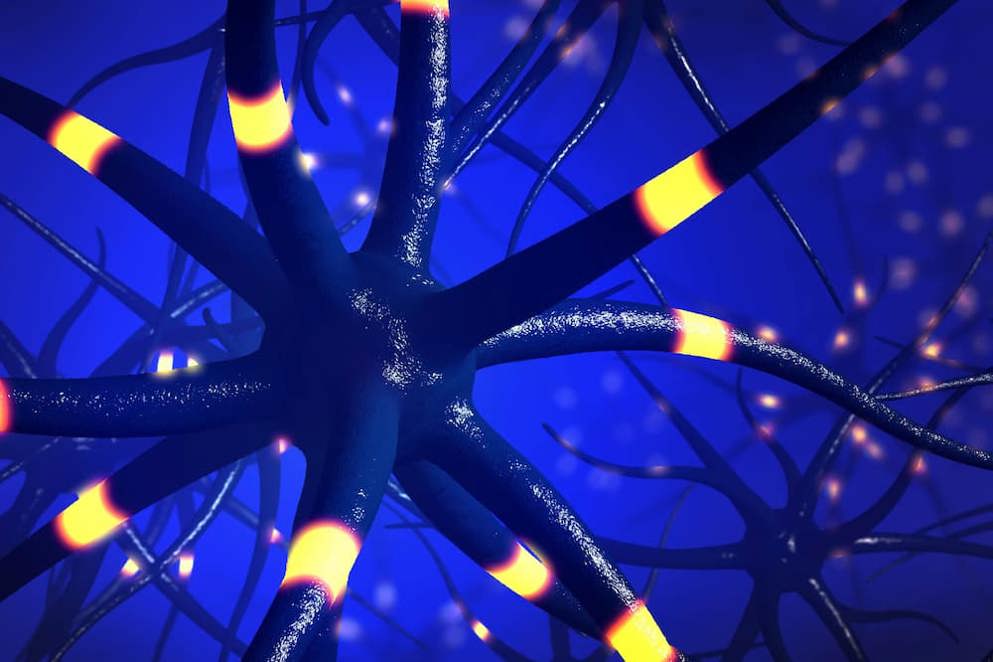
Welcome
MS is an immune-mediated disease, caused by peripherally driven inflammation and neurodegeneration of the central nervous system (CNS).
To learn more about why early intervention can maximise the chances of altering the course of MS before the disease progresses further1-4, discover Understanding MS.
High-efficacy therapies (HETs) are traditionally associated with a higher risk of serious adverse events compared to lower-efficacy disease-modifying therapies (DMTs)5,6, but safety data from recently available immunosuppressants, including B-cell and sphingosine-1-phosphate receptor HETs, show that high-efficacy is not always associated with high-safety risk in patients with MS1,7,8. Explore such developments and clinical trials in Treatment advances in MS.
Dozens of biomarkers are currently being evaluated to improve diagnostic accuracy and to monitor disease activity9-11. These include serum neurofilament light chain (sNfL) and glial fibrillary acidic protein (GFAP), which we present with other recent research.
References
- Gartner J, Hauser S, Bar-Or A, Montalban X, Cohen J, Cross AH, et al. Benefit-risk of ofatumumab in treatment-naïve early relapsing multiple sclerosis patients. Multiple Sclerosis Journal. 2020;26:210-210.
- Giovannoni G, Butzkueven H, Dhib-Jalbut S, Hobart J, Kobelt G, Pepper G, et al. Brain health: time matters in multiple sclerosis. Multiple Sclerosis and Related Disorders. 2016;9:S5-S48.
- He A, Merkel B, Brown JWL, Zhovits Ryerson L, Kister I, Malpas CB, et al. Timing of high-efficacy therapy for multiple sclerosis: a retrospective observational cohort study. The Lancet Neurology. 2020;19(4):307-316.
- Turner B, Cree BAC, Kappos L, Montalban X, Papeix C, Wolinsky JS, et al. Ocrelizumab efficacy in subgroups of patients with relapsing multiple sclerosis. Journal of Neurology. 2019;266(5):1182-1193.
- Marriott JJ. Safety and Efficacy of Fingolimod in Treatment-Naïve Multiple Sclerosis Patients. Journal of Central Nervous System Disease. 2011;3:JCNSD.S5120-JCNSD.S5120.
- Thompson AJ, Baranzini SE, Geurts J, Hemmer B, Ciccarelli O. Multiple sclerosis. The Lancet. 2018;391:1622-1636.
- Hauser SL, Bar-Or A, Cohen JA, Comi G, Correale J, Coyle PK, et al. Ofatumumab versus Teriflunomide in Multiple Sclerosis. New England Journal of Medicine. 2020;383(6):546-557.
- Kappos L, Bar-Or A, Cree BAC, Fox RJ, Giovannoni G, Gold R, et al. Siponimod versus placebo in secondary progressive multiple sclerosis (EXPAND): a double-blind, randomised, phase 3 study. The Lancet. 2018;391(10127):1263-1273.
- Kapoor R, Smith KE, Allegretta M, Arnold DL, Carroll W, Comabella M, et al. Serum neurofilament light as a biomarker in progressive multiple sclerosis. Neurology. 2020;95(10):436-444.
- Toscano S, Patti F. CSF biomarkers in multiple sclerosis: beyond neuroinflammation. Neuroimmunology and Neuroinflammation. 2020;2020(1):14-41.
- Ziemssen T, Akgün K, Brück W. Molecular biomarkers in multiple sclerosis. Journal of Neuroinflammation. 2019;16:1-11.
of interest
are looking at
saved
next event
This content has been developed independently of the sponsor, Novartis Pharma AG, who had no editorial input into the content. EPG Health received unrestricted educational funding from the sponsor in order to help provide its healthcare professional members with access to the highest quality medical and scientific information, education and associated relevant content.



